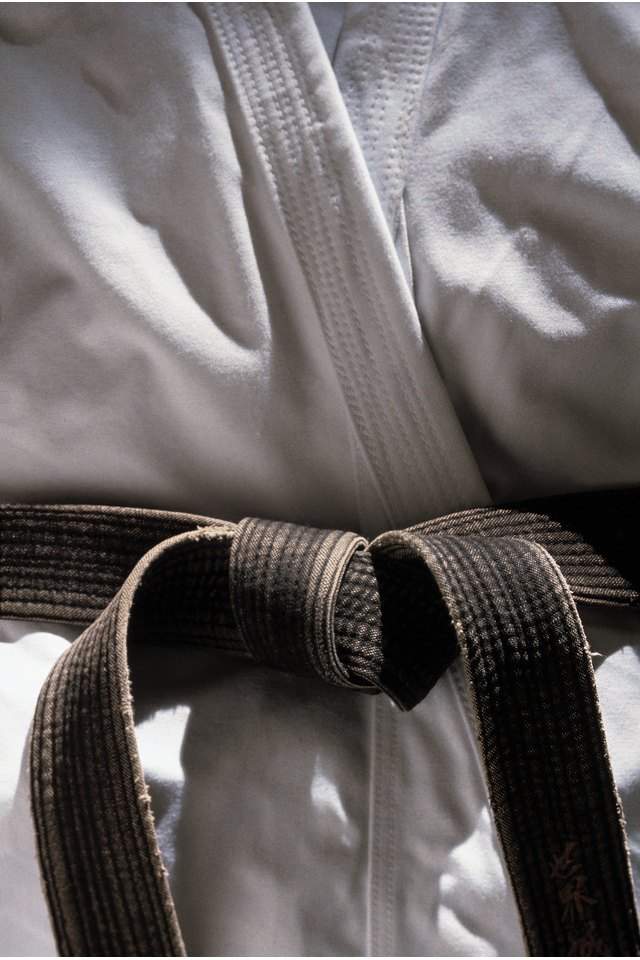The Meaning of Belt Color Levels in Martial Arts

Colored belts represent levels of progress for students of martial arts. The system was pioneered in the 19th century by Dr. Jigoro Kano, considered by many as the father of modern judo. The belt system has since come to be used by other martial arts, including taekwondo and karate. Colors vary between disciplines, and even within disciplines can be different from country to country or club to club; they may also include ranks within colors. But the symbolism of the belts remains the same across disciplines.
White
White belts are typically given to beginner students of the martial arts. White is a symbol of birth and beginning, indicating that the student is just starting to gain knowledge. White belts are used in most martial arts, including karate, taekwondo and judo.
Yellow
A yellow belt symbolizes sunlight, a symbol of new strength and the beginning of new life. This represents the student's progress as he receives knowledge from his instructor and become stronger and more skilled. The yellow belt is used in karate and taekwondo. It is used for junior judo students -- 16 and younger -- according to the U.S. Judo Federation, but not for students 17 and older.
Orange
The orange belt also symbolizes the sun. It represents a sun that is growing in power, warming the earth and preparing it for new growth. The student at this stage is preparing for further development. Orange belts are used in both karate and judo.
Green
As a martial arts student improves, he receives a green belt. The green belt represents the growth of a seed that sprouts upward, becoming a plant. Like the sprout, the student is becoming something greater. Green belts can be found in karate, taekwondo and judo.
Blue
A blue belt represents the sky and signifies continued growth. It is used in judo, taekwondo and karate. A student moves upward in his development, just as a plant reaches up into the blue sky as it grows.
Purple
A purple belt student is undergoing change as he advances in his studies and begins to set his sights on the black belt. The purple belt represents this change, symbolizing the sky changing color at dawn. Purple belts are used in both karate and judo.
Brown
Brown represents maturity. Like seeds that turn brown in the harvest season, the student has matured into something new at this stage in his development. The student will begin to see the benefits of his work, like a farmer reaping his crop at harvest. This belt color is given to students in judo and karate.
Red
Red is another representation of the sun -- this time representing a close, hot sun. This proximity to the sun represents the student's detailed knowledge. Judo, karate and taekwondo all use red belts.
Black
A black belt is the highest level of belt in judo, karate and taekwondo -- though there may also be levels of black belt. The black belt is the opposite of the white belt, signifying completion and maturity in the student. It is popularly said that ancient martial artists' white belts would become black with dirt over years of training, but this story is likely just that.
